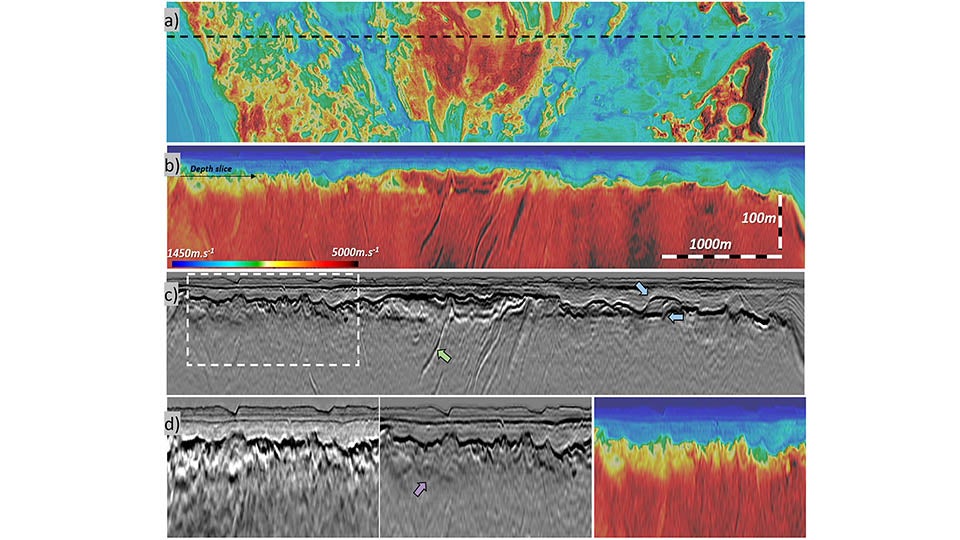Viridien authors of high-resolution FWI imaging paper recognized in 2024 SEG Awards
Paris, France | Aug 29, 2024
Award-winning paper presents two case studies in which FWI imaging of data acquired with a source-over-spread design outperforms conventional imaging methods in terms of image resolution.
Viridien congratulates Isabel Espin, Nicolas Salaun, Hao Jiang and Mathieu Reinier on being recognized by SEG with an Honorable Mention in the category of Best Paper in The Leading Edge in 2023 for their paper ‘From FWI to ultra-high-resolution imaging’ published in The Leading Edge Volume 42, No. 1, January 2023.
According to Isabel Espin: “Our paper aimed to demonstrate that FWI imaging is an impactful technique that can considerably increase seismic imaging resolution when the full wavefield is considered in the least-squares inversion process. All recorded multiple, ghost, and diving waves, originally treated as noise in conventional imaging, can now be fully exploited to obtain high-resolution images and better characterize the subsurface.”
The article discusses two case studies in which FWI imaging outperforms conventional imaging methods (Kirchhoff pre-stack depth migration [KPSDM] and reverse time migration [RTM]) in terms of image resolution. For both cases, the data were acquired with the source-over-spread design that deploys wide-towed sources on top of the streamer spread in combination with a large front source.
The first case, from the Greater Castberg area, aimed to image a reservoir over complex fault blocks. The second case concerned the Nordkapp Basin, where the imaging target was the Carnian Sand packages next to large salt bodies. The authors highlight the multiple benefits of enhanced resolution for reservoir definition, de-risking drilling, and gaining a better geologic understanding of the top of salt.
Nicolas Salaun said: “In the light of our results, we believe it is possible to reconsider optimal acquisition designs tailored specifically for advanced FWI imaging, especially given the recent increase in demand for HR surveys, notably to better characterize the near surface, image fine geological details, avoid drilling hazards, and also to plan wind-turbine foundations. For all these cases, having a velocity field at the same resolution as the seismic data will have considerable impact for subsurface understanding. Moreover, given current industry requirements for high-quality data for improved target imaging, the use of sparse nodes simultaneously with source-over-streamer acquisition can be the ultimate acquisition design. This design, together with the benefits of advanced FWI imaging, can greatly improve imaging quality, from shallow to deep, and reduce the costs and risks throughout the exploration and production workflow.”

200 Hz FWI Imaging to study the top of salt and intra-salt intrusions. FWI velocity model at a depth of 400 m (a) showing strong lateral variations in velocity at the top of salt. FWI velocity (b) and reflectivity (c) in section view showing fast velocity features, suggesting anhydrite inclusions (green arrow) and carbonate build-ups (blue arrows). A comparison of the KPSDM, FWI Image and velocity model (d) reveals complex faulting structure (violet arrow) present above the salt body.
About Viridien
Viridien (www.viridiengroup.com) is an advanced technology, digital and Earth data company that pushes the boundaries of science for a more prosperous and sustainable future. With our ingenuity, drive and deep curiosity we discover new insights, innovations, and solutions that efficiently and responsibly resolve complex natural resource, digital, energy transition and infrastructure challenges. Viridien employs around 3,500 people worldwide and is listed as VIRI on the Euronext Paris SA (ISIN: FR001400PVN6).